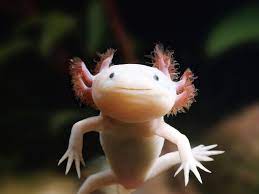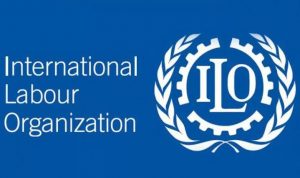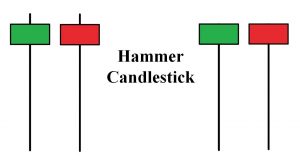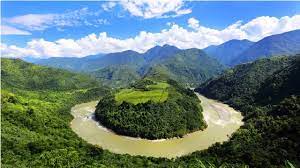Today’s Current Affairs: 30th Nov 2023 for UPSC IAS exams, State PSC exams, SSC CGL, State SSC, RRB, Railways, Banking Exam & IBPS, etc
Table of Contents
Axolotl : Campaign To Support Conservation

Mexican ecologists from the National Autonomous University have relaunched the “Adoptaxolotl” fundraising campaign to support the conservation of axolotls, an endangered fish-like salamander.
- Axolotl is a species of salamander. The name “axolotl” is derived from the Latin words “atl” (water) and “xolotl” (monster).
- Salamanders are a group of amphibians that includes frogs and toads.
- Found in Mexico City’s Lake Xochimilco
- IUCN Critically Endangered
- They have the ability to regenerate lost or damaged limbs, hearts, spinal cords, and even parts of their brains without permanent scarring. They remain underwater throughout their life
- Axolotls are a cultural icon in Mexico for their unique slimy appearance and limb-regenerating ability.
- Scientists believe that the regrowing power of Axolotls could hold the secret to tissue repair and even cancer recovery in the future.
- The Mexican Axolotl population has drastically declined by more than 99% in less than two decades.
- The primary contributors include Water pollution, the spread of Chytrid Fungus (a skin-eating disease), habitat loss, droughts, wastewater disposal, and the impacts of climate change.
OpenAI’s Project Q*:

OpenAI’s Project Q*, an AI breakthrough, has sparked controversy and concerns about its potential threat to humanity.
- Project Q* is an AI breakthrough, reportedly capable of solving complex problems and demonstrating advanced reasoning similar to humans.
- The project has raised concerns about its potential threat to humanity, with fears stemming from its deep learning capabilities, potential to accelerate scientific progress and the possibility of unintended consequences and misuse.
- Artificial General Intelligence (AGI) refers to artificial intelligence with human-like cognitive abilities, enabling it to understand, learn, and apply knowledge across various domains, similar to human intelligence. Q* is seen as a leap towards Artificial General Intelligence (AGI).
- While AGI aims for broad intelligence, Generative AI specifically concentrates on producing content, such as images, text, or other forms of data, using algorithms and models trained on existing examples.
- The ethical concerns surrounding Project Q* include questions about the adequacy of safety measures, the potential acceleration of scientific progress, and the responsible commercialization of such advanced AI models.
Satyajit Ray Lifetime Achievement Award:

Hollywood actor and producer Michael Douglas was honored with the prestigious Satyajit Ray Lifetime Achievement Award for Excellence in Cinema at the 54th International Film Festival of India (IFFI) in Goa.
- His profound impact on cinema resonates through iconic roles, from his Academy Award-winning portrayal as Gordon Gekko in Wall Street to gripping performances in films like Fatal Attraction, The American President, Basic Instinct, Traffic, and Romancing the Stone, among many others.
- As a UN Messenger of Peace, his commitment to global issues includes advocacy for disarmament, nuclear non-proliferation, and halting illicit arms trade.
South East Asia’s First Night Sky Sanctuary:

The Government of India, recently announced the upcoming establishment of South East Asia’s first Night Sky Sanctuary in Ladakh.
- Night Sky Sanctuary in Ladakh will be located at Hanle village in Eastern Ladakh as a part of Changthang Wildlife Sanctuary.
- It is being set up with the help of Indian Institute of Astrophysics Bengaluru, which is affiliated to the Department of Science & Technology, Govt of India.
- Spread over 1,073 square kilometers, it is adjacent to the Indian Astronomical Observatory, the second-highest optical telescope in the world.
- It will boost Astro-tourism in India and will be one of the world’s highest-located sites for optical, infra-red, and gamma-ray telescopes.
- The absence of extensive urban areas preserve the natural darkness in Ladakh and contributes to minimal Light Pollution, fostering ideal conditions for Night Sky Sanctuary
Fibre Optic Cables : Increasing Demand

With the increasing demand for high-speed internet connections Optical Fibres have been materialized into the present-day reality of high-speed data transmission.
- Optical Fibres are thin, cylindrical strands composed of glass, with a diameter typically comparable to that of a human hair.
- These fibres possess the remarkable ability to transmit various forms of information, including text, images, audio, video, phone calls, and any data that can be digitized, across vast distances at speeds approaching that of light.
- They are strong, lightweight, and remarkably flexible, making them suitable for burial underground, submersion underwater, or coiling around a spool.
- Almost 60 years ago, physicist Charles Kao proposed the concept of using glass Fibres as a superior medium for telecommunications, superseding the prevalent copper wires.
- His groundbreaking contributions to Fibre optic communication earned him a share of the 2009 Nobel Prize in Physics.
- Fibre provides more bandwidth and has standardized performance up to 10 Gbps and beyond, something that it is impossible to achieve when using copper.
- More bandwidth means that Fibre can carry more information with far greater efficiency than copper wire.
- Since data travels in the form of light in Fibre-optic cables, very little signal loss occurs during transmission and data can move at higher speeds and greater distances.
- Fibre-optic cable is also much less susceptible to noise and electromagnetic interference than copper wire.
- It is so efficient, in fact, that roughly 99.7% of the signal reaches the router in most cases.
- Fibre-optic cable is completely immune to many environmental factors that affect copper cable.
- The core is made of glass, which is an insulator, so no electric current can flow through.
A Call For Safer And Healthier Working Environments : ILO Report

The ILO (International Labour Organization) has released a report titled ‘A Call for Safer and Healthier Working Environments’, which will be discussed at the 23rd World Congress on Safety and Health at Work (WCSHW) in Sydney, Australia.
- The WCSHW, first held in 1955, is one of the largest international conferences for work health and safety.
- It aims to connect global leaders in safety and harm prevention from over 120 countries.
Key Highlights of the Report:
- Approximately 30 lakh (3 million) workers globally die each year due to work-related accidents and diseases.
- More than 63% of these deaths occur in the Asia-Pacific region.
- Long working hours (55 hours or more per week) led to the most fatalities in 2016, accounting for nearly 7.45 lakh deaths.
- Exposure to occupational particulate matter, gases, and fumes resulted in around 4.5 lakh deaths.
- Occupational injuries caused approximately 3.63 lakh deaths.
- Sectors such as mining and quarrying, construction, and utilities were identified as the most hazardous globally based on fatal occupational injury rates.
- The FOIR is a statistical measure used to quantify the number of deaths resulting from work-related accidents or injuries within a specific occupational group, industry, or geographic region over a specified period.
- So far 79 out of the 187 member countries have ratified the ILO Occupational Safety and Health Convention, while 62 countries have ratified the Promotional Framework for Occupational Safety and Health Convention, 2006.
- India has not ratified both the conventions.Recently, in the wake of Uttarkashi tunnel incident , the Central Trade Unions had urged the Union government to ratify the conventions.
- A significant portion of work-related deaths (26 lakh) is attributed to work-related diseases, including circulatory diseases, malignant neoplasms (Cancerous tumours), and respiratory diseases.
- Changing trends in diseases due to occupational exposure, such as increased cases of trachea, bronchus, and lung cancers attributable to chromium exposure, and rising cases of mesothelioma due to asbestos exposure.
- Deaths due to exposure to asthmagens and particulate matter, gases, and fumes have decreased by over 20%.
Fattah 2 : Hypersonic Weapon

Iran recently unveiled its new and improved hypersonic weapon, the Fattah-2.
- Fattah 2 means conqueror in Farsi, is a hypersonic ballistic missile.
- It was developed by Iran. It is a new version of its first domestically made hypersonic ballistic missile named ‘Fattah’.
- It is equipped with a hypersonic glide vehicle (HGV) warhead that can manoeuvre and glide at hypersonic speed.
- It uses a liquid-fuel rocket propellant.
- The precision-guided two-stage missile can hit targets within a range of 1500 kilometres with a velocity of Mach 15 (fifteen times the speed of sound i.e., 18522 km/hr).
- It can make quick turns to avoid defence systems.
- It is equipped with a warhead that has a spherical engine running on solid fuel and movable nozzles that allow it to change course when outside the atmosphere to accurately help it evade air-defence systems.
- Hypersonic Missile is a weapon system that flies at least at the speed of Mac 5, i.e., five times the speed of sound and is manoeuvrable.
- These missiles are extremely fast and far harder for surface-to-air missile defence systems to target.
Hammer Candlesticks In Trading:

Nifty recently ended 95 points higher to cross above the key hurdle at the 19,850 level and form a hammer candlestick pattern on the daily chart.
- Hammer Candlesticks in Trading is one of the most popular candlestick patterns traders use to gauge the probability of outcomes when looking at price movement.
- A hammer is a price pattern in candlestick charting that occurs when a security trades significantly lower than its opening but rallies within the period to close near the opening price.
- This pattern forms a hammer-shaped candlestick, in which the lower shadow is at least twice the size of the real body.
- The body of the candlestick represents the difference between the opening and closing prices, while the shadow shows the high and low prices for the period.
- The hammer candlestick occurs when sellers enter the market during a price decline. By the time the market closes, buyers absorb selling pressure and push the market price near the opening price.
- The close can be above or below the opening price, although the close should be near the open for the real body of the candlestick to remain small.
- Analysts view it as a potential bullish trend reversal indicator, mainly appearing at the end of a downtrend.
- It could be used as a leading intraday indicator to signal a change in bullish/bearish momentum.
Indian Ocean Tuna Commission:

The Department of Fisheries, Ministry of Fisheries, Animal Husbandry & Dairying, is organizing the 19th Working Party on Data Collection and Statistics (WPDCS19) of the Indian Ocean Tuna Commission (IOTC) from 28th November to 2nd December 2023.
- Indian Ocean Tuna Commission is an intergovernmental organisation mandated to sustainably manage highly migratory (tuna and tuna-like) fisheries resources in the Indian Ocean.
- The Agreement for the Establishment of the Indian Ocean Tuna Commission was adopted by the Food and Agriculture Organisation of the United Nations at the 105th Session in Rome on 25 November 1993.
- The objective of the IOTC is to promote cooperation amongst contracting members to ensure, through appropriate management, the sustainable use of fishery resources.
- The Indian Ocean is the second-largest tuna fishery in the world.
- The IOTC currently has 31 contracting parties who are members of the IOTC and two cooperating non-contracting parties, Liberia and Senegal.
- Membership of the IOTC is open to:
- Indian Ocean coastal countries
- countries, or regional economic integration organisations, that are members of the UN
- countries that are members of UN special organisations
- countries that fish for tuna in the Indian Ocean
- India is a member of this organisation.
- Headquarters: Victoria, Seychelles
Global Biodiversity Framework Fund:

Experts said that the world’s new biodiversity framework fund lacks any real financial commitment to meet conservation targets.
- Global Biodiversity Framework Fund was created to ramp up investment in nature restoration and renewal.
- It has been designed to mobilise and accelerate investment in the conservation and sustainability of wild species and ecosystems, whose health is under threat from wildfires, flooding, extreme weather, and human activity, including urban sprawl.
- The fund was established at the 7th Assembly of the Global Environment Facility in Vancouver, Canada.
- It will help countries achieve the 23 targets set under the Kunming-Montreal Global Biodiversity Framework (KMGBF).
- The framework was adopted at the 15th Conference of the Parties (COP15) to the UN Convention on Biological Diversity last December.
- It will be managed by the Global Environment Facility (GEF) and raise funds through private, philanthropic, and government investments.
- This is a departure from GEF, which relied on just 40 donors for finance.
- It will also have access to funds earmarked for biodiversity conservation under GEF.
- The facility has a cumulative budget of $5.25 billion for 2022-26, of which 36 percent is earmarked for biodiversity.
- The remaining budget is for projects on climate change, pollution, land and ocean health.
INS Imphal:

The crest of Yard 12706 (Imphal), the third amongst the four Project 15B stealth-guided missile destroyers, was unveiled by Raksha Mantri Shri Rajnath Singh in New Delhi on November 28, 2023.
- INS Imphal is the third in the Visakhapatnam-class stealth-guided missile destroyers.
- It is among the largest destroyers constructed in India, with an overall length of 164 metres and a displacement of over 7500 tonnes.
- Speed: Over 30 knots (approximately 55 kmph).
- The ship is a potent platform capable of undertaking a variety of tasks and missions, spanning the full spectrum of maritime warfare.
- The ship boasts a high indigenous content of approximately 75%, which includes Medium Range Surface-to-Air missiles, BrahMos surface-to-surface missiles, Indigenous Torpedo Tube Launchers, Anti-Submarine Indigenous Rocket Launchers (Larsen & Toubro, Mumbai) 76mm Super Rapid Gun Mount (BHEL, Haridwar).
- The crest design depicts the Kangla Palace on the left and ‘Kangla-Sa’ on the right.
- The Kangla Palace is an important historical and archaeological site in Manipur and was the traditional seat of the past kingdom.
- With a dragon’s head and lion’s body, the ‘Kangla-Sa’ is a mythical being from Manipur history and is symbolic as the guardian/protector of its people. ‘Kangla-Sa’ is also the state emblem of Manipur.
- It is the first capital warship to be named after a city in the northeast, Imphal, the capital of Manipur.




